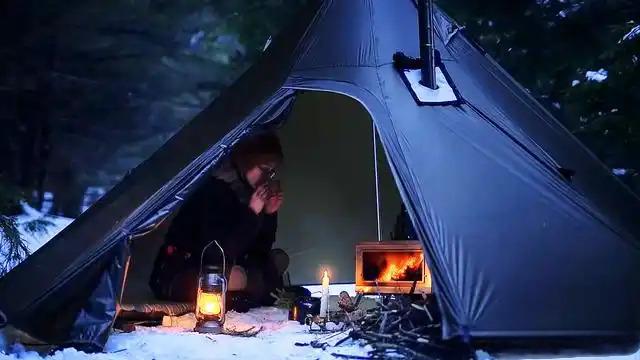Woodburning Stove for Winter Camping: Is Your First Choice of Camping Equipment?
When planning for winter camping, many may assume that a woodburning stove is an essential piece of gear. However, it is actually one of the last items to consider. Woodburning stoves are often inefficient for both staying warm and cooking in extreme cold conditions. Instead, prioritizing the right gear and strategies for warmth and survival is key.
The most important aspect of winter camping is ensuring a warm and comfortable sleep. A high-quality sleeping bag rated for subzero temperatures is a must. Pairing it with a ThermaRest sleeping pad helps insulate from the cold ground and prevents heat loss.
Choosing a 3-season or 4-season tent is crucial to providing adequate shelter against snow and wind. A well-ventilated tent reduces condensation, which can make the interior damp and uncomfortable.
Staying warm starts with wearing the right clothing. A layering system consisting of moisture-wicking base layers, insulating mid-layers, and waterproof outer layers ensures optimal heat retention and protection from the elements.
Staying hydrated is essential for maintaining body warmth. In subzero temperatures, water sources may freeze, making it necessary to carry a pot for boiling water or melting snow for drinking purposes.
Rather than relying on a woodburning stove, which requires constant fuel supply and proper ventilation, using a white gas or LPG portable stove is a more efficient and reliable choice. These stoves perform well in cold temperatures and provide consistent heat for cooking and boiling water.
Inefficient Heating: A woodburning stove takes time to heat up and requires constant fuel supply, making it impractical for quick warmth.
Fuel Collection Challenge: Finding dry, suitable firewood in winter conditions can be difficult, especially in snow-covered areas.
Weight and Portability: Carrying a woodburning stove and firewood adds unnecessary bulk and weight to camping gear.
While making a large fire can provide warmth, it should not be the primary heat source. Gathering firewood keeps you active and warm, but it requires effort and suitable conditions. Using butane or white gas fuel is a more practical alternative for heating and cooking needs.
For winter camping, a woodburning stove is not the first choice of equipment. Instead, prioritizing proper insulation, hydration, and an efficient heating system is the key to staying warm and safe in extreme conditions. By selecting lightweight, reliable, and effective camping gear, you can ensure a comfortable and enjoyable winter camping experience.